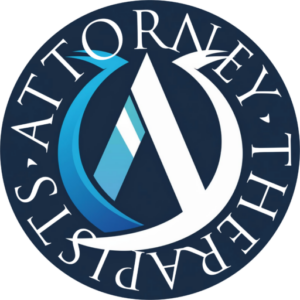The legal profession is undergoing a profound transformation. The traditional model of law practice—hierarchical firms, predictable advancement, and stable prestige—has been disrupted by technological innovation, economic restructuring, and evolving client demands. Artificial intelligence is automating research and drafting once reserved for junior associates, corporate clients are insisting on leaner billing structures, and alternative legal service providers are reshaping the market. These changes have left many attorneys confronting not only professional uncertainty, but also the existential question of whether law remains a sustainable or fulfilling lifelong vocation.
Increasingly, attorneys are seeking alternative career paths. This trend does not signal failure but rather reveals the versatility of the legal skillset. Law school and practice cultivate rare abilities: the disciplined search for truth, the capacity to connect disparate data into coherent narratives, and a rigorous approach to problem-solving under conditions of uncertainty. These “hard skills” extend far beyond law and are readily transferable to other professions.
This Article explores the contours of this evolving professional landscape. Part II examines the systemic pressures prompting attorneys to reimagine their careers. Part III identifies and articulates the core competencies developed through legal training and practice that have relevance across disciplines. Part IV offers a case study of Mike Lubofsky, JD, MA, LMFT, who transitioned from practicing attorney to psychotherapist, and whose story illustrates how legal skills can enrich alternative careers.
II. The Changing Landscape of the Legal Profession
The modern legal profession is increasingly inhospitable to the stability and predictability that characterized prior generations. Several forces have converged:
A. Technological Disruption. Artificial intelligence and document automation tools now perform routine drafting, research, and contract review. While these developments may enhance efficiency, they simultaneously diminish opportunities for junior lawyers to develop foundational skills.
B. Economic Pressures. Global corporations—often the most lucrative clients—demand efficiency, capped fees, and measurable value. This has eroded the billable-hour model and compressed the pathway to financial security for many practitioners.
C. Professional Well-Being. The American Bar Association and state bar associations have recognized alarmingly high rates of depression, anxiety, and substance use among attorneys. For many, the stress of adversarial practice and the relentless demand for productivity are no longer sustainable.
In this environment, increasing numbers of attorneys are reconsidering whether law practice alone is the best expression of their talents and ambitions.
III. Transferable Skills Developed in Law
Contrary to the assumption that legal skills are uniquely tied to law practice, the competencies refined through legal education and litigation are broadly applicable. Among the most salient are the following:
A. The Search for Truth. At the heart of lawyering is a disciplined inquiry into facts and principles. Attorneys learn to parse ambiguous sources, to test evidence for credibility, and to triangulate competing narratives in pursuit of a workable truth. This epistemic rigor—skepticism paired with analytical method—equips attorneys to enter professions where discernment, evidence-based reasoning, and intellectual honesty are paramount.
B. Connecting the Dots. Law practice requires the synthesis of vast and heterogeneous data. Attorneys learn to relate statutes to case law, client narratives to evidentiary records, and facts to broader policy considerations. This ability to construct coherent narratives from disparate materials is not merely intellectual—it is problem-solving in its highest form. Across domains, from business consulting to clinical psychology, the ability to “connect the dots” yields clarity from complexity and generates solutions where others perceive only chaos.
C. Advocacy and Communication. Attorneys are trained communicators: they can distill complexity into persuasive clarity. Whether in a courtroom or a negotiation, the lawyer’s craft is fundamentally about translating data into human meaning. This skill is universally valuable in professions demanding persuasion, education, or client engagement.
D. Resilience Under Pressure. Finally, the adversarial system hones a tolerance for stress and conflict. Attorneys are conditioned to perform under scrutiny, deadlines, and high stakes—capacities that transfer seamlessly to any field requiring composure under duress.
IV. A Case Study: From Attorney to Psychotherapist
The career of Mike Lubofsky, JD, MA, LMFT, exemplifies the possibility of reinvention. After more than two decades practicing law, Lubofsky discerned that the adversarial nature of legal practice was at odds with his personal values and long-term well-being. In midlife, he returned to graduate school in psychology, ultimately becoming a licensed marriage and family therapist. Today, he is recognized as one of the leading psychotherapists for attorneys in the United States.
The trajectory is instructive not only because of the courage it required, but because of how deeply it relied upon legal skills:
A. Truth-Seeking in Therapy. Just as litigation requires probing for facts beneath client narratives, psychotherapy demands careful attention to unspoken meanings beneath verbal accounts. Lubofsky’s legal training in eliciting and testing testimony directly informs his ability to help clients surface deeper truths about their experiences.
B. Connecting the Dots in Human Experience. Legal practice trains attorneys to weave disparate evidence into coherent theory. In psychotherapy, Lubofsky applies this same cognitive architecture to help clients connect life experiences, emotional patterns, and relational dynamics into meaningful insight.
C. Advocacy for Attorneys. As a psychotherapist focused on attorneys, Lubofsky leverages not only his professional empathy but also his insider’s knowledge of law practice. His ability to articulate the unique stressors of the legal profession makes him particularly effective in guiding attorneys through burnout, perfectionism, and existential dissatisfaction.
V. Conclusion
The shifting landscape of the legal profession is not merely a crisis but also an opportunity. As economic, technological, and cultural forces unsettle the traditional practice of law, attorneys are discovering that their training prepares them for a far broader range of vocations than previously imagined. The core skills of the lawyer—truth-seeking, dot-connecting, persuasive communication, and resilience—are rare and precious in any field.
The story of Mike Lubofsky underscores that an attorney’s second act can be not only viable but profoundly impactful. His transition from law to psychotherapy demonstrates that the skills refined in one profession can be redirected toward healing and human growth. As the legal profession continues to evolve, more attorneys may find that their true calling lies not only in the courtroom but also in the broader landscape of human problem-solving.









